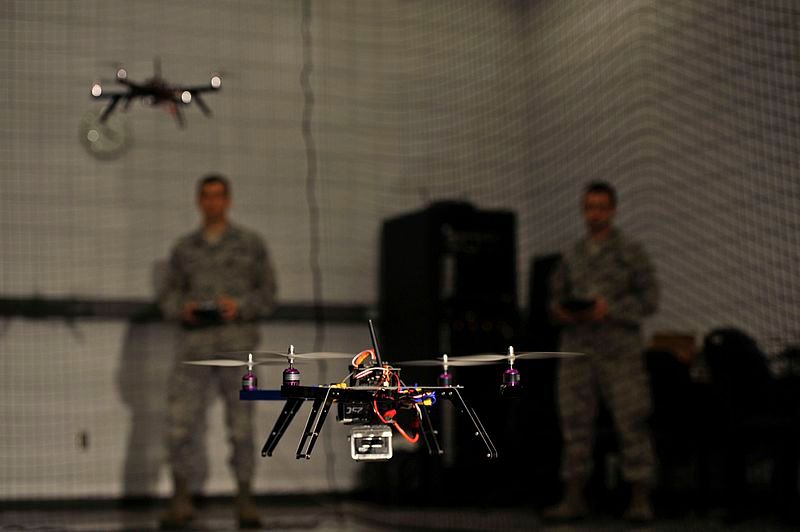While artificial intelligence (AI) seemed until recently to be science fiction, countless corporations across the globe are now researching ways to implement this technology in everyday life. AI works by processing large quantities of data, interpreting patterns in that data, and then translating these interpretations into actions that resemble those of a human being. Scientists have used it to develop self-driving cars and chess-playing computers, but the technology has expanded into another domain: agriculture. AI has the potential to spur more efficient methods of farming in order to combat global warming, but only with expanded regulation of its development.
Global Warming and Agriculture: A Vicious Cycle
Global warming continues to threaten every aspect of our everyday lives, including crop production. It will reduce the soil moisture in areas close to the equator while leaving northern countries virtually unscathed, according to a study from Wageningen University. We are already seeing the impact of these modified growing conditions on our food production in the form of lower crop yields.
Reduced food production has an especially devastating impact on developing countries. Climate change causes the loss of 35 trillion consumable food calories per year and harms poorer countries who do not have the money to import food. The result is growing food insecurity. And rising sea levels only compound the problem. By the year 2100, sea levels are expected to rise by one meter, which will have a detrimental impact on growers on the coasts whose crops cannot survive in areas where the water is too salty.
However, agriculture is not just a victim of global warming, but also a cause. Agriculture is part of a vicious cycle in which farming leads to global warming, which in turn devastates agricultural production. The process of clearing land for agriculture results in widespread deforestation and contributes to 40 percent of global methane production. Therefore, to confront climate change, it is necessary to ensure reforestation—but how? What is the path to efficient, environmentally-conscious farming?
The Benefits of AI for Environmentally-Conscious Agriculture
This is where AI enters the scene. Farmers use AI for methods such as precision agriculture; they can monitor crop moisture, soil composition, and temperature in growing areas, enabling farmers to increase their yields by learning how to take care of their crops and determine the ideal amount of water or fertilizer to use.
Furthermore, this technology may have the capacity to reduce deforestation by allowing humans to grow food in urban areas. One Israeli tech company used AI algorithms that create optimal light and water conditions to grow crops in a container small enough to be stored inside a home. The technology could be especially beneficial for countries in Latin America and the Caribbean, where much of the population lives in cities. Furthermore, the ability to grow food in pre-existing urban areas suggests that humans could become less dependent on deforestation for food production.
Additionally, AI can help locate and therefore protect carbon sinks, forest areas that absorb carbon dioxide from the atmosphere. Otherwise, continued efforts to clear these forests will release more carbon dioxide into the atmosphere. Furthermore, some AI is being developed that can find and target weeds in a field with the appropriate amount of herbicide, eliminating the need for farmers to spread chemicals across entire fields and pollute the surrounding ecosystem. Some countries are already implementing AI into their agricultural methods. Some farmers in Argentina are already using digital agriculture; there are already AI farms in China.
AI can also be used to curb global warming outside of agriculture. The technology can be used to monitor how efficiently buildings are using energy and monitor urban heat islands. Urban heat islands are first created when urban building materials like concrete and asphalt absorb heat, causing cities to grow hotter than the rest of their surroundings. People then rely more heavily on air conditioning throughout the day in order to stay cool, and the energy used for these services results in greater greenhouse gas emissions. Providing information about the location of these islands could help politicians determine what policies they should adopt to reduce emissions and encourage more efficient and environmentally-conscious city planning.
The Risks of AI
Nonetheless, AI is far from a silver bullet—it could actually contribute to global warming. Due to the large amount of data that AI needs to process, training a single AI releases five times the emissions that an average car would emit during its lifetime, thereby adding to the already substantial environmental impact of computing technology. Data storage and processing centers that deliver digital services like entertainment and cloud computing are already responsible for two percent of global greenhouse gas emissions, a number comparable to the overall percentage of pollution contributed by the aviation industry. Although this statistic may not seem overwhelming, it does suggest that the environmental costs of AI will need to be reduced before expanding the technology on a global scale. Some researchers are already working on developing a standard metric that researchers can use to compare how efficient their particular AI systems might be, ultimately encouraging innovators to create environmentally-friendly data-processing.
Further, securing access to AI on a global scale may pose some challenges. Countries will both need experts in the field who can successfully use the technology and internet connection, neither of which are always readily available. Therefore, in order for developing countries to take advantage of the benefits of AI and improve their food security, there will need to be a focus on developing the infrastructure necessary for internet access and teaching professionals how to use the technology. Additionally, AI can be expensive. Farmers might go into debt and will not be able to maintain the technology on their own as it suffers everyday wear-and-tear. Those unable to secure access to the technology will lose out to larger farms that can implement AI on a wide scale.
But farm owners themselves will not be the only ones faced with new pressures as a result of AI. New technologies will render many agricultural jobs obsolete as machines are able to accomplish the same tasks as humans. For example, China has created a seven-year pilot program that uses robots instead of humans to run farms. This program does not bode well for the future of jobs in agriculture: many of China’s 250 million farmers could lose their jobs due to increased automation.
Some may argue that the rise of automated jobs is not as threatening as it may seem, especially given the US agricultural labor shortage. However, the situation is not necessarily the same in other countries. Many countries in the Global South remain dependent on the agricultural sector because there are few job opportunities in urban areas. But if farmers can produce more food at a faster rate with machines, they will have an incentive to shift away from hiring humans, placing the livelihoods of many families at risk. Even if farmworkers do not lose their jobs, their wages could decline as they appear less efficient compared to their robot competitors. The result is chronic poverty and inequality.
Looking Forward: The Next Steps for AI in Agriculture
Given these concerns, AI cannot be the only response to climate change. These types of adaptive technologies can mitigate the consequences of climate change, but more sweeping measures are necessary to secure global access to food in the face of rising temperatures. If countries are to develop AI for use in agricultural sectors, global leaders must consider the potential costs, the role of legal institutions, and the environmental consequences of data processing before investing in the technology on a broader scale.





